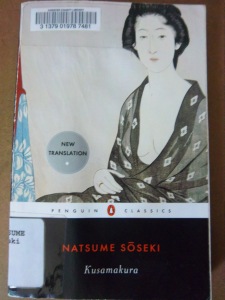When I reread Death by Darjeeling I mentioned that I flew through the first few books right in a row (much like I did now). The fifth book, The Jasmine Moon Murder, was the first one I had to wait for; I received it for Christmas and took it back to college to read.
 The latest Charleston society event is a Civil War-themed ghost crawl through the historic Jasmine Cemetery. The spooky tableaux are meant to raise money for charities earmarked by the Medical Triad, and Theodosia and her friends are catering as a favor to her boyfriend Jory’s Uncle Jasper, vice president at Cardiotech. Unfortunately, not everyone is as kind; Jasper Davis had at least one enemy because he is killed with a fatal injection before the end of the night.
The latest Charleston society event is a Civil War-themed ghost crawl through the historic Jasmine Cemetery. The spooky tableaux are meant to raise money for charities earmarked by the Medical Triad, and Theodosia and her friends are catering as a favor to her boyfriend Jory’s Uncle Jasper, vice president at Cardiotech. Unfortunately, not everyone is as kind; Jasper Davis had at least one enemy because he is killed with a fatal injection before the end of the night.
Dr. Davis was in the process of developing the Novalaser, a device meant to improve angioplasty by leaps and bounds. Unfortunately, he recently disagreed with his boss about the release timeline, arguing that the equipment should go through more testing before becoming available for general use. This was not the news the struggling company wanted to hear. It also upset a local PR firm that has staked a lot on covering the story. Rivals at the two other major medical research companies also have potential motive, if they fear the device’s success. To top it off, Jasper also has an angry ex.
Theodosia was one of the first to realize the dying man was poisoned, and feels a responsibility to investigate his death for Jory’s sake. Not everyone wants her on the case, though. This is the first time I’ve really seen Detective Tidwell tell Theo seriously to stop investigating. It’s likely because he feels she is too close to the crime, and also that her past record of success will make others more anxious to stop her. He’s half right, because she faces several dangerous situations even before her final showdown with the culprit; someone takes pot shots at her when she’s riding in the fox hunt, and a man she is supposed to meet for information is killed shortly before the assignation. She even receives a threatening note. Coincidentally (or perhaps not so much), this book is the first time Theodosia’s amateur sleuthing is officially compared to Nancy Drew’s.
I thought the plot was interesting, and I appreciate that the author’s corporate experience allows her to bring fresh motives to the cozy mystery genre. My only complaint was with one of the conclusions Theo draws. She finds is particularly incriminating that someone at the riding stables had access to a syringe, and considers this a major clue. However, most of her suspects work at medical tech companies, where syringes are not exactly unheard of. Besides, couldn’t the culprit have swiped one from wherever s/he obtained the drug.
Also, I’m pretty sure Laura Childs has a system for who the guilty person is. I had a guess after the first few books, and the fourth and fifth confirmed my hunch. I’m anxious to test it out in the next book; I almost hope it doesn’t work!
I’ve mentioned before how I love seeing “antiquated” technological references in books that are otherwise relatively contemporary. This was written in 2004, and Theodosia is fascinated that her new phone has text messaging and can also take and send photos. It even turns out to be a helpful feature in the case. I was smirking a little bit at all of this compared to Siri, until I remembered that my own cell phone is seven years old, from 2005. I was also really excited when I got it that it had text messages and a camera. I guess this means it’s time to shop for a new phone…




